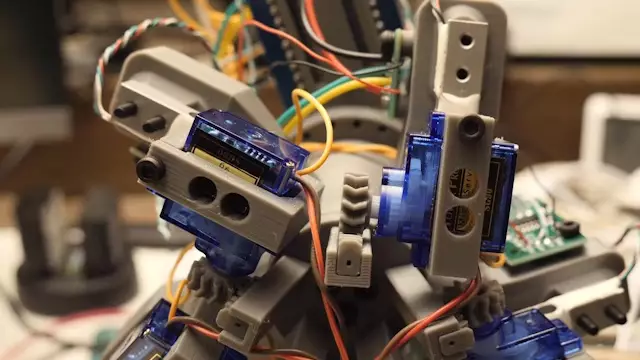Throughout history, humans have been captivated by the art of lock picking, transforming it from a clandestine skill into a high-tech frontier of experimentation. The romanticized image of a skilled locksmith or hacker delicately manipulating pins or electronic circuits is a staple in popular culture. Now, the pursuit of automating this craft through robotics is not just about replicating manual dexterity; it’s about pushing the boundaries of physics, sensing technology, and programming to craft machines capable of perpendicular precision. This endeavor symbolizes a broader quest—merging mechanical engineering with sensory intelligence to tackle real-world challenges in security bypassing. The allure, of course, is undeniable: the idea that a tiny device could, with the right understanding of physical forces, unlock complex mechanisms swiftly and reliably.
The Vision of a Physics-Aware Lockpicking Robot
The conceptual foundation rests on using physics, specifically force sensing, to emulate the delicate art of lock picking. The approach involves equipping a robot with sensors that can detect tension and resistance within a lock’s pins or tumblers. Imagine a tiny robotic arm, perhaps no bigger than a business card, actively gauging how much pressure to exert on each pin inside a lock’s cylinder. As it slowly manipulates the lock’s components, it learns and adapts—applying just enough force to move pins without causing damage or triggering security features.
This concept is inspired by methods used to bypass traditional lock mechanisms, especially in low-security scenarios where resistance and tension are clues rather than obstacles. Early efforts, like Sparks and Code’s experimental robot, attempted to harness tension sensors to guide the picking process. The idea was elegant: rather than brute-force attempts, the robot would “feel” its way through the lock, mimicking a human’s intuition but with the consistency and endurance of a machine. Unfortunately, the implementation face-planted in reality. It’s one thing to theorize that sensors can detect pin tension accurately, and quite another to engineer a system that can do this robustly amidst the complexities of real locks.
The Challenges of Physics in Robotics
The core difficulty lies in translating physical signals into actionable commands. In theory, sensory feedback about tension should allow the robot to adjust its grip in real time. But in practice, the variability of lock designs, wear-and-tear, and environmental factors like moisture or dirt introduce noise that muddles sensor readings. Additionally, the force needed to pick different types of locks varies—what works for a simple pin tumbler might not work for a more intricate barrel or disc lock.
Furthermore, creating a robot that can interpret these subtle, often ambiguous signals requires sophisticated algorithms. Machine learning could help, but training these systems to generalize across different lock types remains a significant hurdle. The feedback loop is complex: too little force, and the pin won’t budge; too much, and it might cause a jam or break the lock altogether. Achieving a balance is an ongoing trial-and-error process.
The Limitations and the Road Ahead
Despite the setbacks, the efforts by Sparks and Code exemplify the spirit of relentless innovation. It’s a reminder that pushing technological boundaries involves frequent failures, but these failures are invaluable learning experiences. The current prototypes are in disarray, unable to reliably sense and respond to the internal tensions of numerous lock types. Yet, these experiments lay foundational knowledge—understanding what sensors work best, how to filter out noise, and how to develop smarter algorithms.
What truly energizes this project is the potential: imagine a future where robotic lock pickers can quickly and non-destructively access secured spaces to aid locksmiths, security professionals, or even researchers in various fields. But such advancements also raise ethical questions about privacy and security, emphasizing the importance of responsible innovation.
While we’re still in the experimental phase, one thing is clear: the pursuit of a physics-based robotic lockpicker exemplifies the intersection of imagination and technical challenge. It’s not just about building a tool—it’s about exploring the fundamental relationship between physical forces, sensing, and automation. No doubt, as technology progresses and our understanding deepens, we’ll see these gadgets evolve from lab experiments into practical tools—if only to test the limits of security and technological ingenuity.

